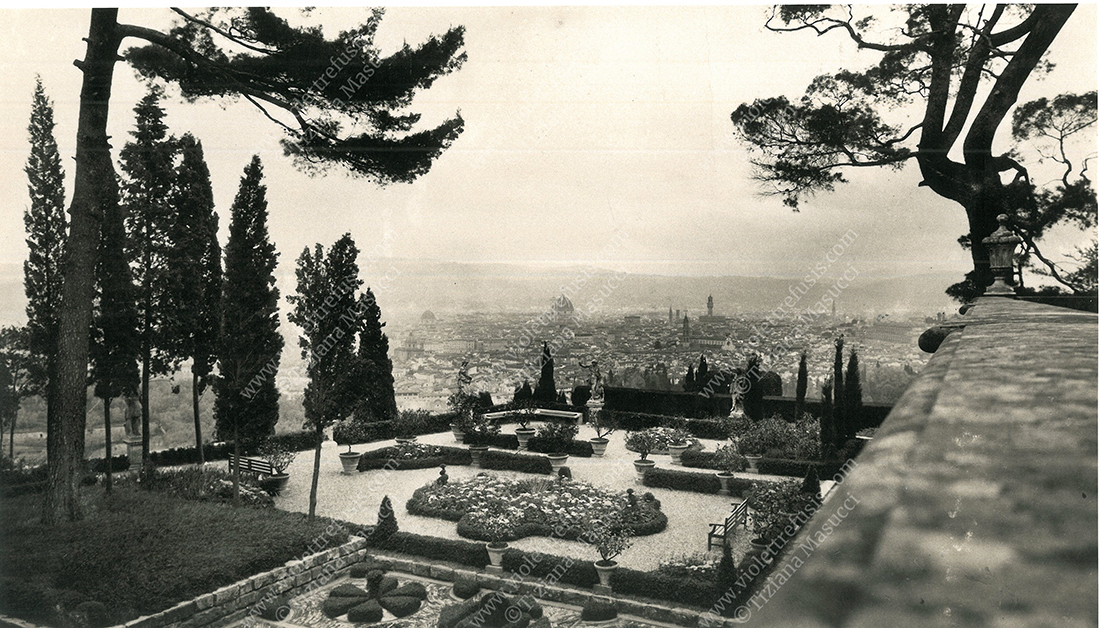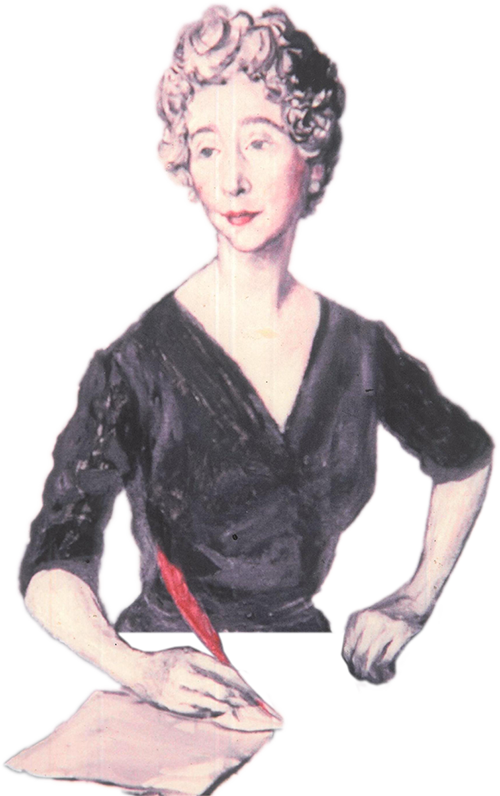W
W
riter, poet, patron of the arts and cosmopolitan intellectual, a leading figure among les grandes animatrices de Paris as well as part of the European gratin. Violet Keppel (subsequently Trefusis) was born on the 6th June 1894 in London. As a child she has lively intellectual curiosity and an infallibly quick eye. The smart and refined environment of her childhood offers Violet’s receptive mind the opportunity to create a personal beau ideal made up of harmony, good taste, and respect for beauty. She enjoys reading and collecting first editions, hunting for antiques. She is fascinated by the cinematograph, and above all she calls herself “a collector of countries”. Her mother, Alice Frederica Edmonstone doesn’t thwart Violet’s precocious talents but encourages them. The thirst for knowledge and the wanderlust so open up Violet’s horizons that she will always reject conventions à la anglaise as well as every kind of provincialism. In May 1905 Violet arrives in Paris, for the first time and it’s a revelation. With prophetic fire she exclaims: “When I grow up, I will live in Paris and write books in French!” After three years she visits Florence and declares with conviction: “In Florence I realized that Italy was as necessary to me as France, but for different reasons. Italy could be superimposed. France was the foundation stone without which nothing could have been accomplished.”
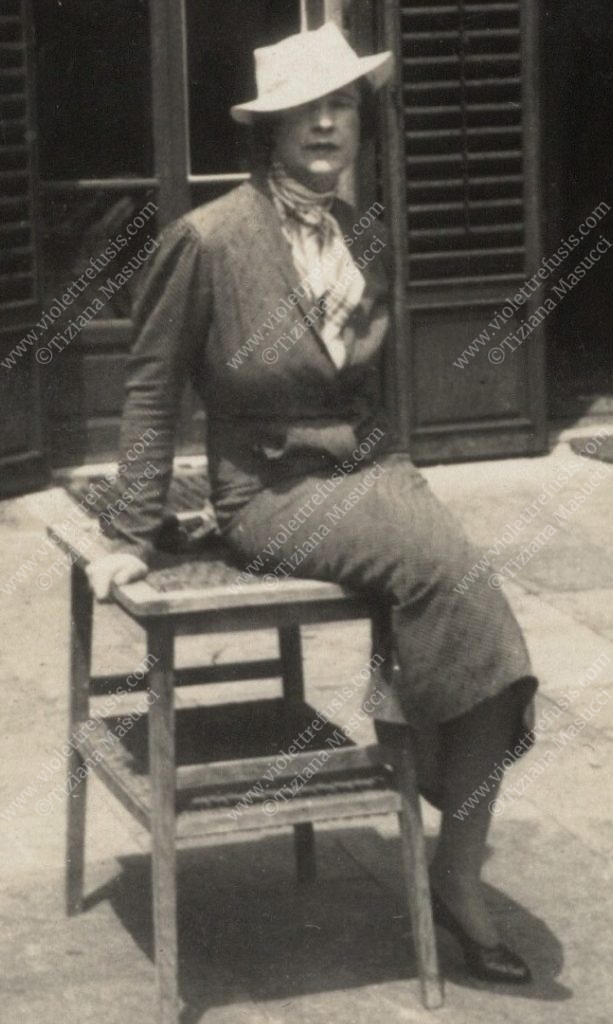
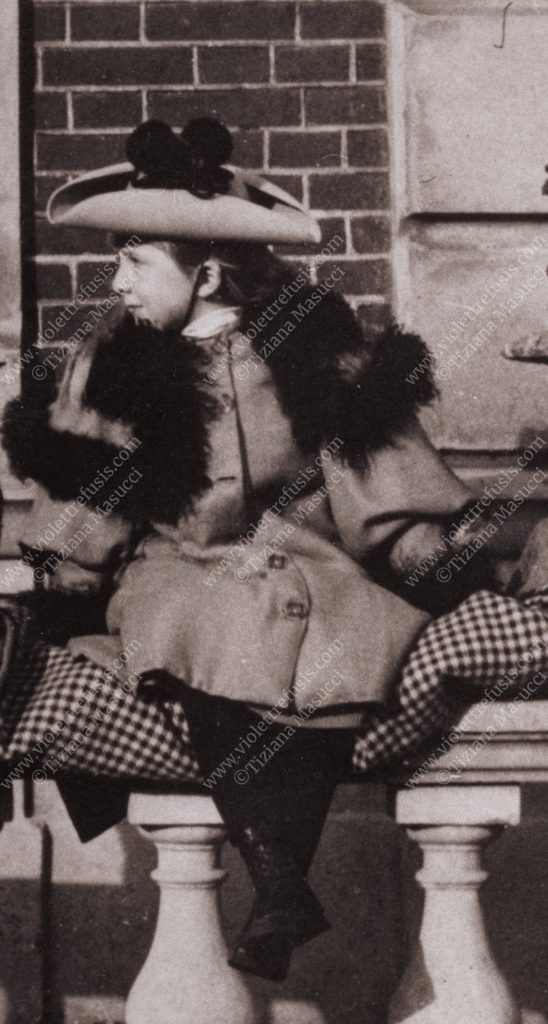
During the pre-First World War years Miss Violet Keppel is renowned for being gifted, fascinating and more avant-garde and cosmopolitan than the other famous society women in London. Though she belongs to English high society she cannot tolerate its ”gentle hypocrisy” and the claustrophobic conventions. She loathes the inward looking life-style. She, a free spirit, has the courage to strive for what she believe in, abandons the “smooth-haired Decorum” Country. It’s not a defeat, it is a rebirth! Madame Tréfusis has been living in Paris since 1923, where she attends the Sorbonne, speaks perfect French and her home at 59 Rue du Ranelagh is always full with brilliant young intellectuals. She makes friends with P.Valéry, Colette, Cocteau, Anne de Noailles, Louise de Vilmorin, F.Poulenc, Les Six, Misia Sert, Arthur Rubinstein; In 1933 she often visits the eclectic hôtel particulier of Marie Laure de Noailles. Dalì, Picasso, Mondrian, Balthus, Jean Hugo became her friends, too. Art as well as Music, is one of Violet’s well-known skills, in fact in 1911 she has attended the School of Art in Munich, and later the Slade School of Fine Art in London. Taking up Marcel Proust’s suggestion, in May 1927 she bought the Mediaeval tower in Saint Loup de Naud, a village at eighty kilometres from Paris, on the road to Provins. The interiors are designed by Violet with her fresh and excellent taste. The wonderful place soon becomes a “must” for Tout-Paris: it is converted into a cultural salon attended by writers, ambassadors and politicians (P. Reynaud, C. de Gaulle, G. Palewski, F. Mitterrand), aristocrats, musicians, painters, fashion designers (C. Dior, E.Schiaparelli, P.Balmain), actors, artists, philosophers (Gabriel Marcel) and historian (J.Chastenet, Georges Lefebvre.)
I
I
n 1929 with Sortie de Secours, a delightful and demanding work, she made her official debut in the world of literature. She had written several poems in 1918, one of them was published in Country Life, and in 1919 her first novel Battledore and Shuttlecock, it is, however, in 1931 with Écho, shortlisted that year for the Prix Femina, that Madame Tréfusis “s’avance armée d’ironie parisienne” and takes her place officially as “vrai romancier” in the literary gratin. Écho, set in Scotland, warns the readers to find their own way in the story because what she does not say is as important as what she does say. Those silences represent the essence of that which is more readily felt than known. In 1933 to launch Tandem, one of her best novels, Violet has the idea of renting the first floor of the Eiffel Tower. She wants to give a fancy-dress ball inspired by a movie recently shown in France and set in the same period as Tandem, the year of the inauguration of the Eiffel Tower. All the guests, including Colette, Serge Lifar, Nora Auric, Elsa Schiaparelli attend the party dressed in fin de siècle fashion. Violet, with her flair to see the way fashions will be going, predicts those wrap dresses will certainly be due for revival. In 1934 all the bookshops in France are selling Broderie Anglaise, a literary treasure that could easily cast a shadow on the originality of Virginia Woolf’s inspiration.
When Hunt the Slipper, her new novel written in English with a protagonist modeled on her cousin, the art-collector Robin Benson, comes out in 1937 the Evening Post notes: “Violet Trefusis is probably the only contemporary woman writer to write books in both French and English.” The outbreak of the Second World War finds Violet working for the French Red Cross. As the Nazis advance she is compelled to flee from Paris. After her adventurous flight through France, she manages to arrive in England. During the war years the Nouvelle Revue Française publishes Les Causes Perdues, it will be re-published by Gallimard in 1950, while in London some of her literary contributions appears in Horizon. She works on behalf of the Fighting French and broadcasts on Radio Londres (Les français parlent aux français). Some of those lectures are collected in the book Prelude to Misadventure. When the war ends, after five years of forced exile, she rushes back to her beloved Paris and declares: “I love only three things: God, my mother, France.”
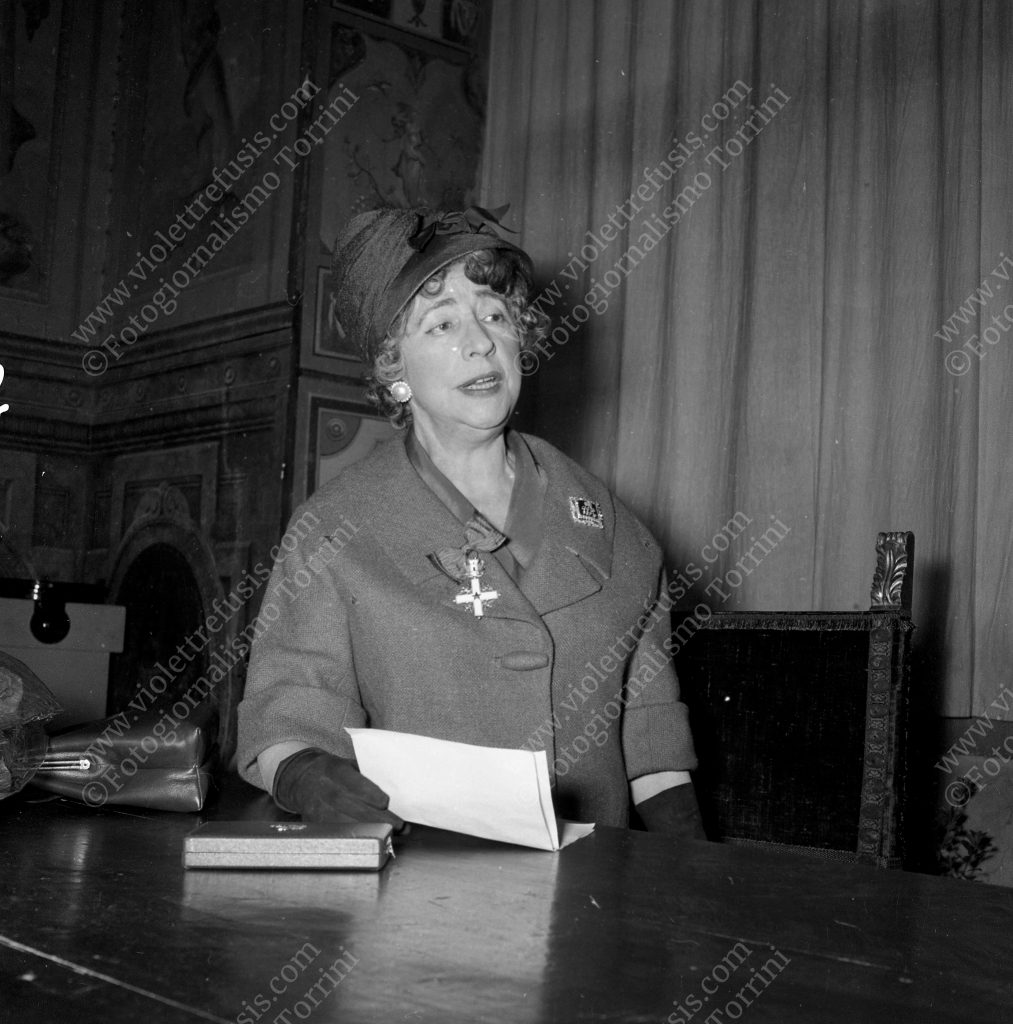
I
I
n 1947 she returns to Florence where her sick mother is staying at Villa dell’Ombrellino, knowing she will die there. Since 1948 Violet is to have use of Villa dell’Ombrellino: “My French ambassadorial outpost in Tuscany”. The ravishing Villa dell’Ombrellino is transformed into an international meeting place for cultural exchange and a crucible where languages mingled and differences were all seen as enrichment, never as complication. Violet speaks perfect French, Italian, Spanish and German. She not only learns a language but she makes it her own. On the 3rd April 1950 « on the proposal of the French Minister of Foreign Affairs», Robert Schuman, she becomes Chevalier de la Légion d’Honneur « en qualité de Femme de Lettres ». The same year I Papagalli sull’Arno (Pirates at Play) is published. She chooses the English language to write this brilliant novel set in Florence, several short stories and three plays. In 1952 she writes Don’t look round, her sparkling autobiography with the intent to play with her readers, as her preface honestly points out. On the 10th May 1953 she is awarded the prestigious Médaille d’Argent de la Ville de Paris. With France it is a story of solid and requited love, and hardly less so with Italy, for on the 4th February 1960 she is conferred Italy’s highest honour of Commendatore della Repubblica Italiana: «for her activity as a writer and for the attachment shown towards our country». In 1961 “donna Violetta” subsidizes retrieval of the head of Pietro Francavilla’s Primavera (Spring), which otherwise would have remained decapitated. The statue was placed on Ponte Santa Trinita and is still there.
During the 1960s, her literary production is characterized mainly by poems, epigrams, aphorisms, essays and articles on her journeys through Europe.
In October 1966 she has a decisive role to play in the twinning between Florence and Edinburgh. A few weeks later the festive atmosphere is swamped out by the catastrophic flood. Violet Trefusis immediately sets about supplying financial aid. She issues an international appeal, praising the industriousness of the Florentines and the courage of the mayor, Piero Bargellini. In 1968 she writes her last novel (unpublished) The Hook in the Heart. She died in her Villa dell’Ombrellino in Florence on 1st March 1972. Her ashes were buried in the Cimitero degli Allori; her heart was to be sealed in the Medieval wall in her garden at Saint Loup de Naud. Violet Trefusis is also a benefactress in France as in Florence. Her clothes, valuable Haute Couture work of art, have been given in charity to the Red Cross of Florence and the San Vincenzo de’Paoli Society; six million lire to the poor of Florence; one million to Saint Mark’s Anglican Church in via Maggio, and a precious Greek statue known as “Il Fauno” (The Faun) to the Comune of Florence. Throughout her life Violet Trefusis has always helped people and made copious donations, anonymously.
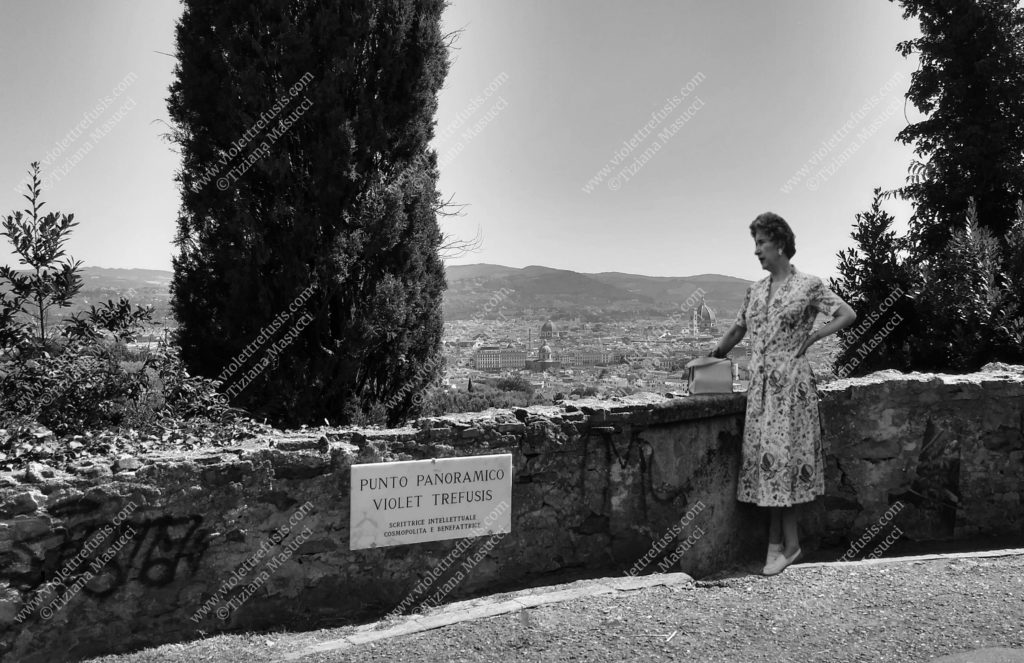
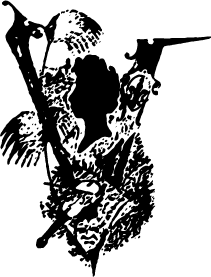

 It
It Fr
Fr